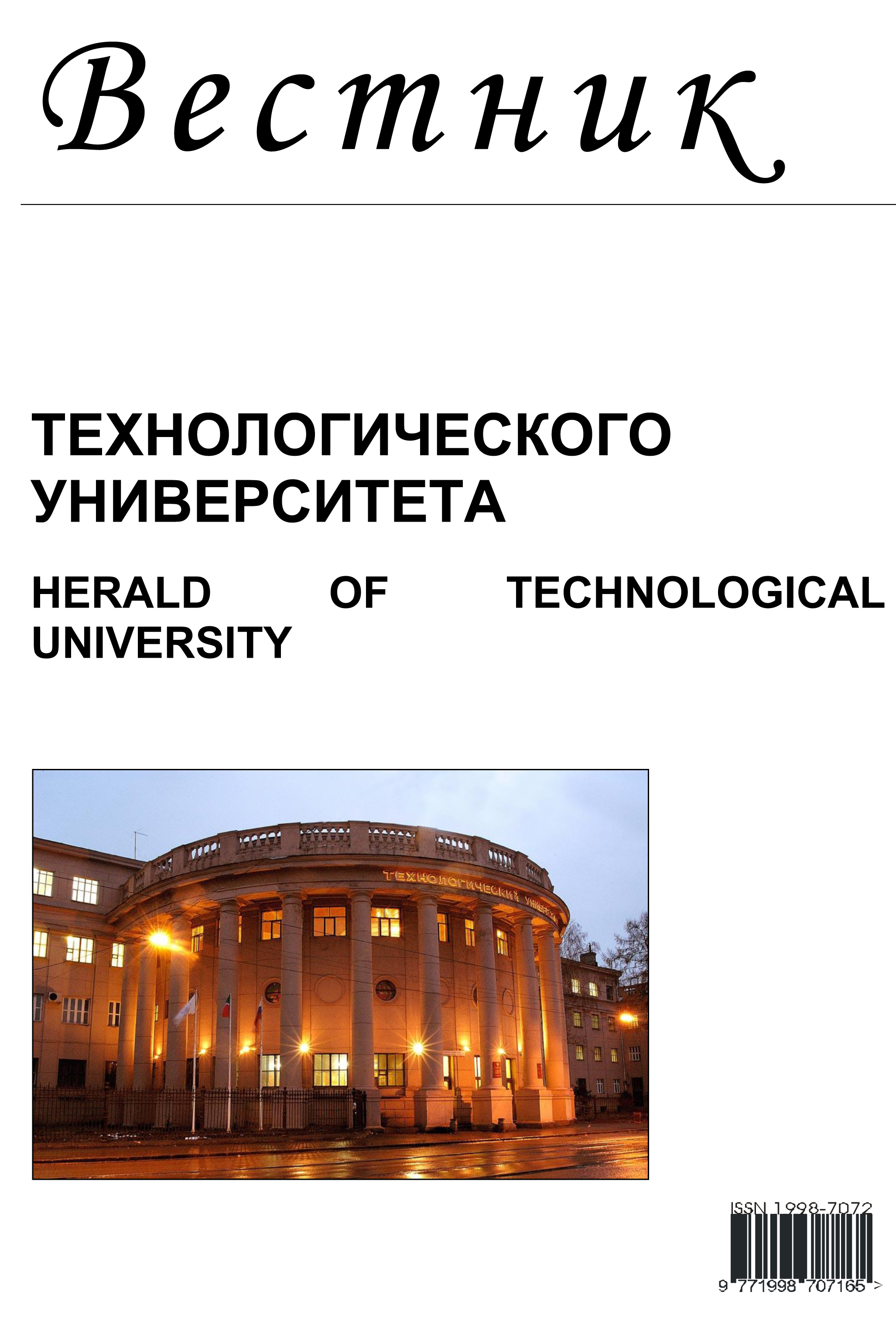Приведен анализ перспектив расширения номенклатуры минеральных вяжущих для иммобилизации радиоактивных отходов за счет развития производства и применения композиционных разновидностей портландцемента и бесклинкерных композиционных цементов – активированных щелочами цементов, алюминатных, сулюфоалюминатных и др.
минеральные вяжущие, цемент, токсичные и радиоактивные отходы, mineral binders, cement, toxic and radwastes
1. Национальный доклад Российской Федерации о выполнении обязательств, вытекающих из Объединенной конвенции о безопасности обращения с отработанным топливом и о безопасности обращения с радиоактивными отходами // M.: 2008.
2. Дубровский В.Б., Лавданский П.А., Енговитов И.А. Строительство атомных электростанций. - М.: АСВ, 2006. - 336 с.
3. Промышленная экология. Под ред. В.В.Денисова. - М.: ИКЦ «Март», 2007. - 368 с.
4. Пронкин Н.С. Обеспечение безопасности обращения с радиоактивными отходами предприятий ядерного топливного цикла. - М.: Логос, 2012. - 420 с.
5. Королев Е.В. Серные композиционные материалы специального назначения:автореф. дис. … д-ра техн. наук. - Пенза. - 2005. - 44 с.
6. Дмитриев С.А., Баринов А.С., Батюхнова О.Г., Волков А.С., Ожован М.И., Щербакова Т.Д. Технологические основы системы управления радиоактивными отходами. - М.: ГУП Мос НПО Радон, 2007. - 376 с.
7. Proc. NUWCEM2011, 1st Int. Symposium on Cement-based materials for Nuclear Wastes. Avignon, France 11-14.10.2011.
8. Рахимов Р.З., Рахимова Н.Р., Ожован М.И., Суханов Л.П. Цементные системы для иммобилизации радиоактивных отходов. Первый международный симпозиум «Материалы на основе цемента для иммобилизации радиоактивных отходов» // Строительные материалы. - №1. - 2012. - с.39-41.
9. Hargreaves D. The assessment of current global situation in cement industry.Report of Cemtech.Conference. 2000.
10. Meyer C. The greening of the concrete industry //Cement and Concrete Composites. - 31(8). - 2009. -p.601-605.
11. Жарко В.И., Гузь В.А., Высоцкий Е.В. Использование отходов в цементной промышленности России // Цемент и его применение. - №4. - 2011. - с.60-62.
12. Malhotra VM. Role of supplementary cementing materials in reducing greenhouse gas emissions. In: Gjorv OE, Sakai K, editors. Concrete technology for a sustainable development in the 21st century. London: E&FN Spon; 2000. p.226-35.
13. Proc. XIII International Congress on the Chemistry of cement.Madrid, Spain 3-8.07.2011.
14. Рахимов Р.З., Рахимова Н.Р. Организация и доклады XIII-го Международного конгресса по химии цемента // Популярноебетоноведение. - №6(41). - 2011. - с. 45-52.
15. Mcdonough W. &Braungart M. Cradle to cradle: remaking the way we make things. - New York:North Point Press, 2002.
16. De Schepper M., Vernimmen L., De Belie N. et al. The Assessment of Clinker and Cement Regenerated from Completely Recyclable Concrete // Proceedings XIII International Congress on the Chemistry of cement. - 2011, p.67.
17. Morsy M.S., Alsayed S.H., Aqel M. Hybrid effect of carbon nanotube and nano-clay on physico-mechanical properties of cement mortar // Construction and Building Materials. - Vol.25. - Issue 1. - 2011. - p.145-149.
18. Lothenbach B., Scrivener K., Hooton R.D. Supplementary cementitious materials //Cement and Concrete Research. - 41(12). - 2011. -p.1244-1256.
19. Bart F., Cau-di-Coumes, Frizon F. et al. Cement-Based Materials for Nuclear Waste Storage, Springer, 2013, 264 p.
20. Martens E., Jacques D., Van Gerven T. et al. Geochemical modeling of leaching of Ca, Mg, Al, and Pb from cementitious waste forms // Cement and Concrete Research. - 40. - 2010. -p.1298-1305.
21. GlasserF.Application of inorganic cements to the conditioning and immobilisation of radioactive wastes. In: M. Ojovan. Handbook of advanced radioactive waste conditioning technologies. - Woodhead Publishing. - 2011.-488 p.
22. Поляков А.С., Масанов О.Л., Захарова К.П. и др. Цементирование радиоактивных солевых концентратов / // Атомная энергия. - 1994. - Т. 77, вып.6. - с. 468-470.
23. Варлаков А. П. Научное обоснование унифицированной технологии цементирования радиоактивных отходов:автореф. дис. … докт. техн. наук. - Москва, 2011.
24. Козлов П.В., Слюнчев О.М., Ровный С.И. Пат. РФ №2360313. Композиция для цементирования жидких радиоактивных отходов, G21F9/16, 18.01.2008.
25. Milestone N.B.Reactions in cement encapsulated nuclear wastes: need for toolbox of different cement types // Advances in Applied Ceramics. -105(1). - 2006. - p.13-20.
26. Angus M., Borwick J., Cann G. et al. The Specification of Cement Powders for Waste Encapsulation Processes at Sellafield site // Proc. NUWCEM2011, 1st Int. Symposium on Cement-based materials for Nuclear Wastes. Avignon, France 11-14.10.2011.
27. GarcíaCalvo J.L., Hidalgo A., Alonso C., FernándezLuco L. Development of low-pH cementitious materials for HLRW repositories: Resistance against ground waters aggression // Cement and Concrete Research. -40(8). - 2010. -p.1290-1297.
28. HuertasF.J., HidalgoA., RozalénM.L. et al. Interaction of bentonite with supercritically carbonated concrete // Applied Clay Science. -42(3-4). - 2009. -pp.488-496.
29. Berger S., Fryda H. Calcium aluminate cements for nuclear wastes conditioning: literature review and new approaches // Proc. NUWCEM2011, 1st Int. Symposium on Cement-based materials for Nuclear Wastes. Avignon, France 11-14.10.2011.
30. CauDitCoumes C., Courtois S., Peysson S., Ambroise J., Pera J. (2009) Calcium sulfoaluminate cement blended with OPC: A potential binder to encapsulate low level radioactive slurries of complex chemistry // Cement and Concrete Research. - 39 (9). - p.740-747.
31. C. Shi, P.V. Krivenko, D.M. Roy, Alkali-activated cements and concretes, Taylor&Francis, Abingdon, UK, 2006, 376 p.
32. Глуховский, В.Д. Щелочные и щелочно-щелочноземельные гидравлические вяжущие и бетоны / Под общ.ред. проф. В.Д.Глуховского. - Киев: Вища школа, Головное изд-во, 1979. - 232 с.
33. Davidovitz J. Geopolymer. Chemistry and applications. Saint-Quentin: Institute Geopolymer, 2008. - 592 pp.
34. Provis J.L. et al. Geopolymers: Structures, Processing, Properties and Industrial Applications. Abingdon: TaylorandFrancis, 2009.
35. Van Deventer J.S.J., Provis J.L., Duxson P. Update on progress in the commercialization of geopolymer technology in Australia // 3rd International Symposium Non-traditionalcement & concrete, p.173-181.
36. Proc. International Conference “Alkali-activated materials”, Praga, 2007.
37. A. Palomo, M. Palacios, Alkali-activated cementitious materials: alternative matrices for the immobilisation of hazardous wastes: part II. Stabilisation of chromium and lead // Cement and Concrete Research. - 33. - 2003. -p.289-295.
38. J.G.S. Van Jaarsveld, J.S.J. van Deventer, L. Lorenzen, The potential use of geopolymeric materials to immobilise toxic metals, part I. Theory and applications // Miner. Eng. - 10. -1996. - 659-669.
39. Кривенко П.В. Специальные шлакощелочные цементы. - К.: Будивельник. - 1992. - 192 c.
40. Deja, J. Immobilization of Cr6+, Cd2+, Zn2+and Pb2+in alkali-activated slag binders //Cement and Concrete Research. -32. - 2002. - p.1971-1977.
41. Shi, C. and Day, R. L., 1996a, Alkali-slag Cements for The Solidification of Radioactive Wastes. In Gilliam and Wiles (eds) Stabilization and Solidification of Hazardous, Radioactive, and Mixed Wastes, ASTM STP 1240, American Society for Testing and Materials, Philadelphia, USA, 163-173.
42. Fernandez-Jimenez A, Macphee D, Lachowski EE, Palomo A. Immobilization of cesium in alkaline activated fly ash matrix // J. Nucl. Mater. - 346. - 2005. - p.185-193.
43. Lambertin D, Frizon F, Blachère A, Bart F Corrosion of clean Mg-Zr alloys in arious basic media for waste encapsulation// Proc. NUWCEM2011, 1st Int. Symposium on Cement-based materials for Nuclear Wastes. Avignon, France 11-14.10.2011.
44. IAEAtestprotocolISO 6961-1982.
45. Рахимов Р.З., Рахимова Н.Р., Ожован М.И. Шлакощелочные вяжущие, растворы и бетоны для защиты от экологической и радиационной опасности // Вопросы радиационной безопасности. - № 3. - 2012. - c.11-17.









